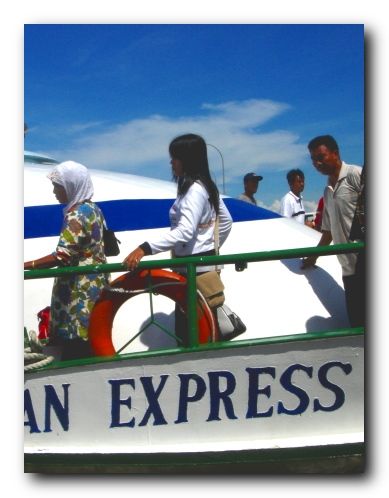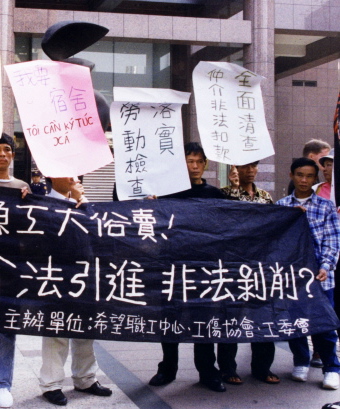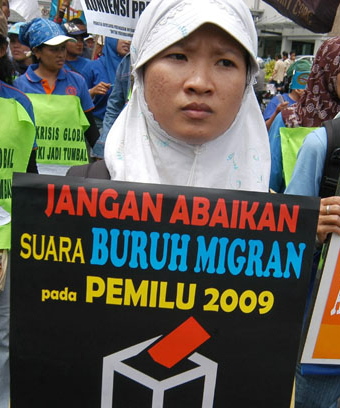Soe Tjen Marching’s book The End of Silence: Accounts of the 1965 Genocide in Indonesia brings this past trauma into the present.
Joost Coté
Those of us who know Indonesia’s history, more or less, have a picture of what happened on 30 September 1965 and in the months that followed. What the nineteen people in Soe Tjen’s book tell us, the readers, about the events of October 1965 and their long aftermath is nonetheless shocking. For this book is not history, a collection of stories from long ago with their painful edges softened by time passing.
The moment we are confronted with in this book is a recent one – the years between 2013 and 2015. It is the moment when these people spoke during interviews with the author about present feelings and on-going circumstances related to that past. Given what is revealed, it may seem inappropriate for these accounts to be packaged up in their neat sentences and pages and filed between pristine book covers. But perhaps it is just this that induces a sufficient sense of calm to allow us to be able to read and digest what they have to tell.
Contemplating the enormity of the events initiated on the night of 30 September, the effects of which continue to ripple through today’s Indonesia, one can read this book as a celebration of the survivors. They stand strong because they dare to break the silence, and they do so now because they know they carry the responsibility of speaking for the hundreds of thousands of others unable to speak and the tens of thousands of others not (yet) able or willing to speak out. You can see their strength and determination in the powerful portrait photos that accompany each speaker’s interview.
The book nevertheless immediately raises the question of how a relatively slim publication such as this can hope to represent the narratives of the hundreds of thousands of those who survived the ‘1965 Genocide in Indonesia’? On what basis is or can a selection be made? Whose experiences are representative? And who has the right to make such a selection?
Soe Tjen makes no claim to be offering a final word, or presenting the whole picture, or indeed providing any further explanation of the events and their causes. Her book is a contribution to a much larger process which (it becomes apparent) she has been and remains part of. A project that might indeed carry out the book’s title, and ‘end the silence’.
In a sense this process has already been well advanced – especially for those outside Indonesia looking in – by the astounding documentaries developed by Joshua Oppenheimer and by the International People’s Tribunal 1965 held in The Hague in 2016, both of which Soe Tjen Marching was involved in, in the latter as the UK organiser. The book extends also on Soe Tjen’s earlier active involvement with the Yayasan Bhinneka Nusantara and its journal, Majalah Bhinneka. (See an interview with Soe Tjen Marching in Inside Indonesia).
But this book is more than the author’s demonstrable commitment to ‘ending the silence’: it reveals her own entanglement in ‘the events of 1965’ as the daughter of a 1965 victim. As much as anything else, then, the book is autobiographical. Not only because the nineteen individuals included in it tell their own life stories, but because, taken as a whole, it describes the journey the author herself made relatively recently along the road to ending the silence within her own family. Soe Tjen not only places herself in the mix of those voices, but in the brief paragraphs that introduce and conclude each speaker’s narrative we are given an insight into the personal threads, the web of experiential connections, that link her to each of the speakers and many of the speakers to each other.
While in a sense the selection of individuals included in the book is random, a measure of representativeness is achieved through the identification of five categories of people affected. First, the speakers are divided between those who were directly targeted (survivors) and those directly related to victims, both those who survived and those who passed away. Within this structure we are also introduced to layers of family connections, and neighbourhood experiences and memories. Thus we have accounts of three male and two female survivors; two siblings of victims; eight children of victims, including the author; and four grandchildren of victims. As well, although mainly representative of Java, there is some geographical distribution across Indonesia. This sampling of individuals and regions is enough to remind us of the web of affect that constitutes the national tragedy.
Although Soe Tjen repeatedly describes herself as author, apart from her own ‘testimony’, it would perhaps be more accurate to characterise her as facilitator. She doesn’t write their stories – or the book. She allows people to speak. The brief commentary introducing and sometimes concluding each interview, the ‘entr’actes’ as it were, reveal a little about the facilitation process (the telephone calls, the recording locations, the interpersonal interactions.) It would have been good, however, to have been told a little more about this. About, for example, the process of translating and the ‘pros-isation’ – by which the speaking voice was transferred to the page. Can emotions for instance ever be translated adequately from one cultural–linguistic context to another? What does the reader of the translation miss?
This slim book engages with people, their memories, their experiences, and their present. It is not the place for a review of the academic history on the subject, about which much academic analysis exists. However, what we do get in the book’s introduction is unfortunately an overly generalised ‘popular’ summary. Much has been written on whether this long drawn out ‘event’ constitutes a genocide, while the book’s subtitle suggests that this is not really in question. The Epilogue which focuses on the question of fear – certainly an appropriate topic for a reflective afterword for this collection of interviews – might have attempted to provide a more informed discussion. This would have encouraged the reader, after closing the book, to continue to reflect on this most intense of human emotions and the enormity of this state-induced fear.
Published outside of Indonesia and in the ‘international’ language of English, this collection of personal experiences is clearly intended for an international readership. As the 2016 International People’s Tribunal 1965 in The Hague has shown, and the recent release of CIA-related documents in the US confirms, that readership needs to recognise its complicity. (If a reminder was needed for Australian readers, there are at least two references to an Australian complicity in the book (pp. 24, 81) adding to the tribunal’s call that here too the official silence needs to be broken.)
Overall, despite its relative brevity, this book provides ‘one more brick in the road’ towards a slow process of revelation and reconciliation. In this process, it will serve its purpose well.
Soe Tjen Marching, The End of Silence: Accounts of the 1965 Genocide in Indonesia, Amsterdam, Amsterdam University Press, 2017. (Photographs by Angus Nicholls)
Joost Coté is Senior Research Fellow, SOPHIS, Monash University. Joost translated Saskia Wieringa’s The Crocodile Hole (Jurnal Perempuan 2015) which presents a fictionalised account of the experiences of Gestapu survivors.















